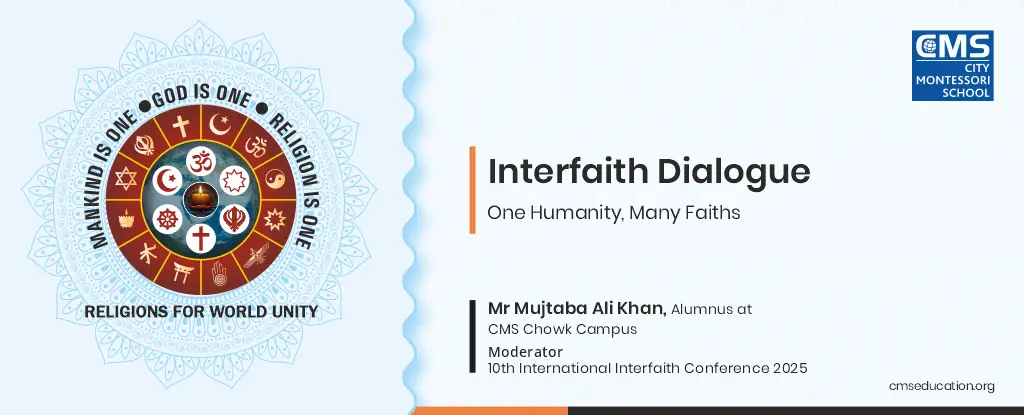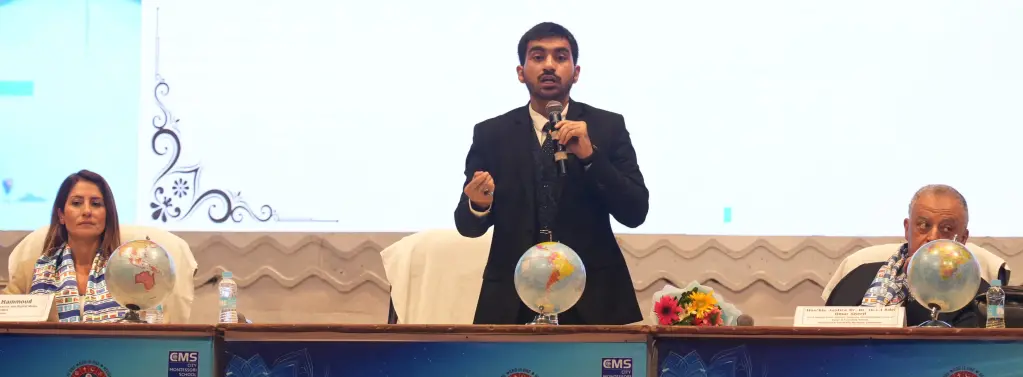
“The lamps are many, but the light is one.” – Rumi
The story of humanity is not written in a single language, nor sung in a single melody. It is a chorus of voices, rising from temples, mosques, churches, synagogues, and monasteries, each carrying its rhythm individually, yet blending into one great symphony. And within that symphony, if we listen closely, there beats the same timeless truth. All faiths speak of one, all prayers ascend to one, all hearts yearn for one.
In this state of war-like tensions prevalent on the earth, where religion is used as a basic method of discrimination amongst people, we must draw our knowledge from the holy textbooks for the sacred texts of the world. Diverse as they may appear, the scriptures converge upon the same message.
The Qur’an proclaims that all mankind has been created from a single soul.
The Bible calls us to love our neighbour as ourselves.
The Bhagavad Gita urges us to see the divine spark within every being.
The Guru Granth Sahib views humanity as one race.
The Dhammapada whispers that hatred never ceases by hatred, but only by love.
When we step back and let these words mingle, we realise, ‘The rivers are many, but the ocean they flow into is one.’
Yet, somewhere along the way, humanity lost its memory of this oneness. We began to guard the walls of our faiths more fiercely than the values they stood for. We saw difference where there was diversity, conflict where there was colour, suspicion where there should have been solidarity. Religion, which was meant to soften hearts, was sometimes wielded as a weapon to harden them.
This is where interfaith dialogue becomes not merely an academic concept but a sacred duty. To engage in dialogue is to choose curiosity over fear, understanding over prejudice, and compassion over hostility. It is to sit at the table of humanity with open ears and an open heart, and to say—
“Tell me your story, for in it, I may find my own reflection.”
And perhaps, the responsibility lies heaviest on the shoulders of the youth.
“The youth are architects of a ‘new’ tomorrow, and not the prisoners of the past.”
Youth have the power to turn suspicion into trust, and mere tolerance into true harmony. They can imagine a world where temples and mosques do not rise as rivals, but as neighbours, where identities are not cages of division, but bridges of connection.
Let us remember: unity is not uniformity. The beauty of a garden lies not in one flower, but in its diversity of colours, shapes, and fragrances. Humanity, too, blossoms when each faith, each culture, each voice, is allowed to bloom in dignity. Interfaith dialogue does not ask us to abandon our uniqueness; it asks us to weave our uniqueness into a larger tapestry of togetherness.
And so, the task before us is both simple and profound. To listen instead of judge. To respect instead of reject. To build friendships that defy barriers and conversations that replace silence with trust. Every act of empathy is a prayer, every bridge of understanding is worship, and every heart that chooses love over hate is a temple unto itself.
As Rumi reminds us, the lamps are many, but the light is one. Let us then be seekers of that light, not in temples alone, not in scriptures alone, but in one another’s hearts. For there, in the quiet glow of compassion, lies the God we all seek.
Let me sum up my reflections with a humble poem, in Lucknow’s ‘Nawabi Andaaz’,
Phoolon se seekho har rang mein khilna,
Insaaniyat se seekho har dil mein milna,
Mehek ban kar chhup jao har saans ke daman mein,
Mohabbat se seekho toote hue dilo ko silna.

Moderator, 10th International Interfaith Conference